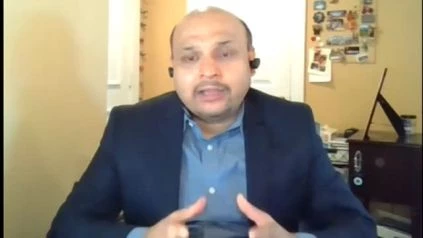Mehul Dalal, Ph.D. Takeda Oncology discusses ASH 2020 abstract – 2979 Results from the International, Multi-Center, Retrospective B-Holistic Study: Describing Treatment Pathways and Outcomes for Classical Hodgkin Lymphoma.
Context:
Just half of the patients with relapsed/refractory (R/R) cHL are cured with salvage chemotherapy accompanied by stem cell transplantation, prompting clinical advancements in classical Hodgkin lymphoma (cHL) (SCT). Most studies to date have been performed in Europe or North America and there is minimal evidence from other regions on patient trends and clinical outcomes. The findings of the International Multi-center Retrospective Review of Treatment PractIces and OutComes (B-HOLISTIC) B-CD30+ HOdgkin Lymphoma, which examined cHL treatment mechanisms, clinical outcomes, and use of health services across East Asia, Latin America, the Middle East, South Africa, Australia, and Russia, are presented (data as of 04 March 2020).
Methodology:
Data were collected retrospectively between 01 January 2010 and 31 December 2013 for patients (18 years) diagnosed with stage IIB-IV cHL or R/R cHL, before death or last follow-up (whichever occurred first across 13 countries. In both classes, patients with initial cHL diagnosis and subsequent progression to R/R cHL were included, given that R/R cHL was diagnosed during the study period. In patients with R/R cHL, progression-free survival (PFS) was the primary endpoint. Overall survival (OS), best therapeutic response and adverse effects were secondary endpoints (AEs).
Outcomes:
A total of 1703 patients from East Asia (n=426), Latin America (n=366), the Middle East and South Africa (n=694), Australia (n=56), and Russia (n=161) were enrolled: 1,598 and 426 patients in the cHL and R/R cHL groups were eligible (321 patients in the cHL group advanced to R/R cHL and were included in both groups). Median follow-up studies for the cHL and R/R cHL groups were 65.2 and 53.2 months. Table 1 displays the baseline patient characteristics. First-line chemotherapy was provided to all patients in the cHL group: ABVD (1363/1598; 85.3 percent) and BEACOPP (104/1598; 6.5 percent) were the most common regimens. In the cHL group, 357/1598 (22.3 percent) patients were given the first-line radiotherapy. Intensive chemotherapy was used as first-line rescue for R/R cHL in 372/426 (87.3%) patients: ESHAP (98/372; 26.3%) and DHAP (65/372; 17.5%) were the most successful regimens, with an overall response rate of 620% (complete remission in 30.8 percent and partial remission in 31.2 percent ). Of the 426 patients with R/R cHL, 292 (68.5%) at relapse/refractory diagnosis were eligible for SCT; 10 patients who were originally ineligible for SCT subsequently became eligible. In total, SCT was done in 222/302 (73.5 percent) eligible patients; after SCT, 63/222 (28.4 percent) patients relapsed. For the R/R cHL community, the median PFS (95% CI) was 13.2 (9.9-20.2) months after initial therapy (Figure 1), with an average 1-, 3- and 5-year PFS rate of 51.2%, 38.7%, and 33.9%, respectively (Table 2). For the first-line cHL category, the median PFS was not achieved. Factors for PFS are shown in Table 3 in the R/R cHL category. For both classes, the median OS was not achieved. All-cause any grade AEs were registered by 783/1598 (49.0 percent) patients with cHL and by 233/426 (54.7 percent) patients with R/R cHL. Serious AEs were reported by 303/1598 (19.0 percent) patients with cHL and by 103/426 (24.2 percent) patients with R/R cHL: the most common (≥2.0 percent) were febrile neutropenia, pneumonia and pyrexia for cHL, and febrile neutropenia and pyrexia for R/R cH
The Conclusion:
B-HOLISTIC findings indicate that in patients with R/R cHL undergoing salvage therapy, PFS rates remain low; the greatest risk was in patients with insufficient response to salvage chemotherapy. The low PFS rates demonstrate the importance of addressing unmet patient needs by considering innovative targeted therapies. PFS concentrations were equivalent in cHL patients to previous studies in Italy, Spain, and Israel (Avigdor A et al. EHA 2020) and ECHELON-1 studies (Bartlett NL et al. ASH 2019). The higher OS rates relative to PFS rates could be due to the impact of modern salvage regimens. Around half of the patients with R/R cHL have undergone SCT, which may promote the use of targeted therapies. Overall, these findings from 2010-2013 indicate that clinical outcomes remain stable despite the variations in healthcare systems, ethnicities, and treatment trends in B-HOLISTIC. The authors note that, given that high-risk cHL management has changed significantly since 2013, more research is required on diagnostic criteria, response evaluation, and patterns of treatment.
Support from studies:
Takeda Pharmaceuticals-financed data processing (IQVIA) and medical writing (Synergy Vision).

